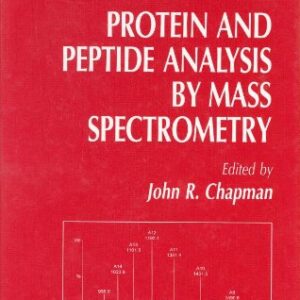Since publication of the first edition, huge developments have taken place in sensory biology research and new insights have been provided in particular by molecular biology. These show the similarities in the molecular architecture and in the physiology of sensory cells across species and across sensory modality and often indicate a common ancestry dating back over half a billion years.?
Biology of Sensory Systems?has thus been completely revised and takes a molecular, evolutionary and comparative approach, providing an overview of sensory systems in vertebrates, invertebrates and prokaryotes, with a strong focus on human senses.
Written by a renowned author with extensive teaching experience, the book covers, in six parts, the general features of sensory systems, the mechanosenses, the chemosenses, the senses which detect electromagnetic radiation, other sensory systems including pain, thermosensitivity and some of the minority senses and, finally, provides an outline and discussion of philosophical implications.
New in this edition:Greater emphasis on molecular biology and intracellular mechanisms New chapter on genomics and sensory systems Sections on TRP channels, synaptic transmission, evolution of nervous systems, arachnid mechanosensitive sensilla and photoreceptors, electroreception in the Monotremata, language and the FOXP2 gene, mirror neurons and the molecular biology of pain
Updated passages on human olfaction and gustation.?
Over four hundred illustrations, boxes containing supplementary material and self-assessment questions and a full bibliography at the end of each part make Biology of Sensory Systems essential reading for undergraduate students of biology, zoology, animal physiology, neuroscience, anatomy and physiological psychology. The book is also suitable for postgraduate students in more specialised courses such as vision sciences, optometry, neurophysiology, neuropathology, developmental biology.
Praise from the reviews of the first edition:
“An excellent advanced undergraduate/postgraduate textbook.” ASLIB BOOK GUIDE
“The emphasis on comparative biology and evolution is one of the distinguishing features of this self-contained book. …. this is an informative and thought-provoking text…” TIMES HIGHER EDUCATIONAL SUPPLEMENTContent:
Chapter 1 Elements (pages 1?18):
Chapter 2 Membranes, Action Potentials, Synapses (pages 19?30):
Chapter 3 General Features of Sensory Systems (pages 31?39):
Chapter 4 Classification and Phylogeny (pages 41?56):
Chapter 5 Genes, Genomics and Neurosensory Systems (pages 57?72):
Chapter 6 Mechanosensitivity of Cell Membranes (pages 75?83):
Chapter 7 Kinaesthesia (pages 85?97):
Chapter 8 Touch (pages 99?121):
Chapter 9 Equilibrium and Hearing: The Uses of Hair Cells (pages 123?146):
Chapter 10 Cerebral Analysis (pages 147?185):
Chapter 11 Chemosensitivity in Prokaryocytes (pages 189?194):
Chapter 12 Mammalian Chemo?Enteroreceptors (pages 195?201):
Chapter 13 Gustation (pages 203?217):
Chapter 14 Olfaction (pages 219?243):
Chapter 15 Invertebrate Vision (pages 253?279):
Chapter 16 The Human Eye (pages 281?314):
Chapter 17 The Retina (pages 315?351):
Chapter 18 Visual Pathways and Cortices (pages 353?378):
Chapter 19 Other Vertebrate Visual Systems (pages 379?412):
Chapter 20 Thermosensitivity (pages 415?421):
Chapter 21 Minority Senses (pages 423?436):
Chapter 22 Pain (pages 437?461):
Chapter 23 Summing Up (pages 465?478):
Chapter 24 Philosophical Postscript (pages 479?495):

![[PDF] Biology of Sensory Systems, Second Edition C. U. M. Smith(auth.)](https://pdfelite.com/wp-content/uploads/2024/04/4e255cec5406c9192363aa82599c5e80-d.jpg)




Reviews
There are no reviews yet.